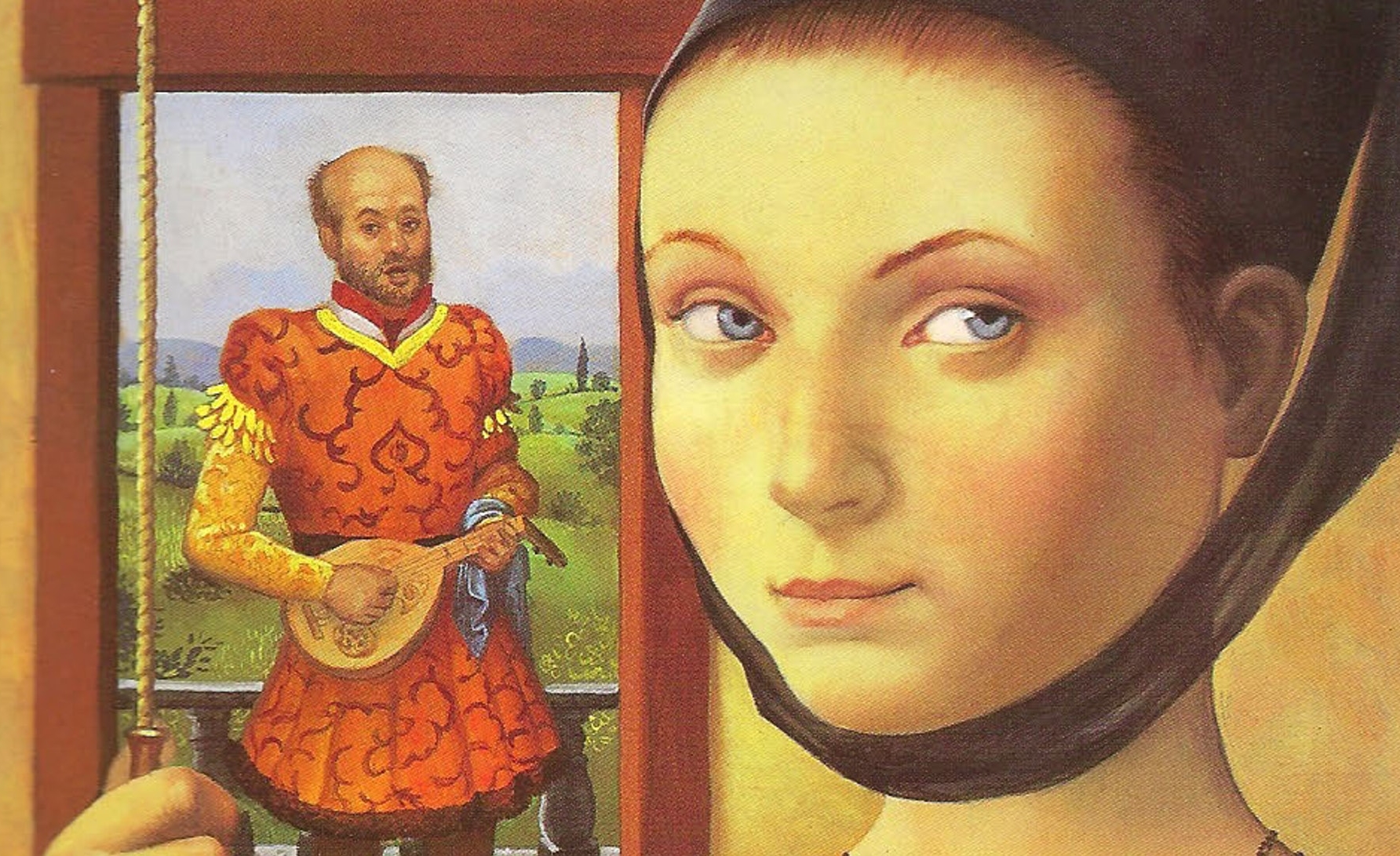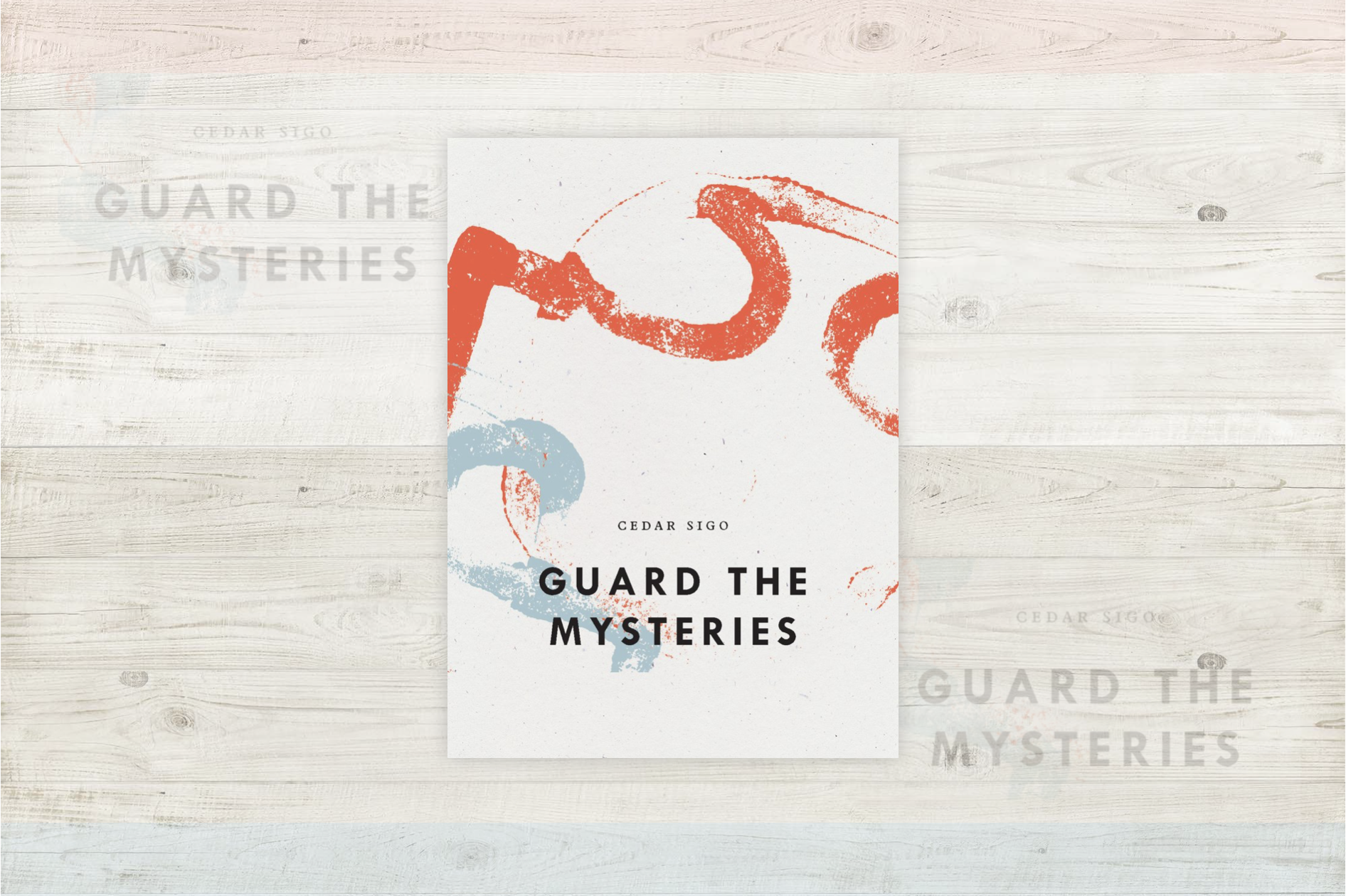Get Real with Carla Stockton
—
If you wander into the nave of the Cathedral of St. John the Divine these days, and you veer to the left before you arrive in front of the altar, look up, and under the stained glass windows on the south wall, you’ll see three flat screen televisions displayed side-by-side, playing a triptych of images, a video altar piece, as it were. Entitled The Intersection of Dreams and inspired by Corpus Hypercubus, by Salvador Dali, the center image features a Christ on a cross, and flanking that person are continually-changing images of people you know—your friends, your children, your siblings, your doppelgangers—looking back at you.
Don’t try to imagine it here. Go to the Cathedral. The work is by British artist Terry Flaxton, and, like the artist himself, it is profound and provocative. You may love it, or you may hate it, but you will have a difficult time resisting intellectual and emotional engagement.

Before I had formally met Terry, at JFK in 1999, I recognized him as an artist with a mind of his own. Standing at the customer service counter of Icelandic Air arguing with the agent about what seat he had been assigned, his longish hair and scruffy manner unabashedly prominent, he wasn’t taking no for an answer.
The large camera equipment bag at his side tipped me off to the fact he was probably a cinematographer. I had only recently embarked on a filmmaking alliance with a new production company, and I was intrigued by the fact that this guy was traveling without a grip or a focus puller; no one was carrying his stuff for him. I felt compelled to make conversation.
The first stab was awkward. We made small talk about the airport, the airline. I asked about his work, his art, and he explained that he had been in the Midwest on assignment for Channel 4 or BBC or PBS (it was a long time ago!). Then, I boarded in Economy, he went up to Business Class, and I forgot all about him until we got to Reykjavik. There, the three-hour layover would have been excruciating had Terry not seen me working on my computer, with Final Draft open, and come over to sit with me for more talk. He asked what I was working on—a deconstruction of the “Wife of Bath’s Tale”—and he was intrigued. “I might love to shoot that,” he said. We talked a bit, and then he left me his card, and I returned to my work.
Back in the States, my writing partner and I finished the script, and I sent it to Terry, who called me immediately. “No kidding,” he chortled. “I definitely want to shoot it.” He sent us a reel, a gorgeous compilation of his best camera work, artful, colorful, magically lit and edited. We were entranced.
When Terry arrived in Connecticut for the filming, I was a nervous neophyte producer, and he was all confidence and wisdom. He saw the cuts we were making to the script as we accommodated our budget, and he shook his head or nodded, as he saw appropriate. He would walk onto a set and assess what needed to be done with lights, and then he would create what seemed to us divine. His first reaction to the underground environment we had chosen beneath the Old Newgate Prison in Glastonbury, CT, was dismay. “I can’t fucking light this!” He repeated over and over. But he did. Our product, a 12-minute examination of the question “What do women really want?” co-written and directed by Daniel Fine, starring Keith David and Sandy Duncan, became a gorgeous camera achievement—sumptuous and stunning. The first narrative film shot entirely on HD, it was shown by DuArt NYC, where independent films go to be edited and prepared for distribution, on their show reel because of the flawless visuals and the perfection with which it transferred to film.
It wasn’t until I visited him and Charlotte Humpston, his longtime partner in life and art, in their home near—serendipitously—Glastonbury, UK, that I began to know the extent of Terry’s talent. He took me to his studio, a cold back room in the meandering house he and Charlotte own on a hill overlooking the Glastonbury Tor, and began to show me the work he was doing when he wasn’t shooting for other people—the sustenance work, he called it —but rather creating the art that really impelled him. It is a stunning body of work that has, since then, grown enormously and can be viewed online at Visualfields, where he and Charlotte carefully curate it.
Terry and Charlotte were in New York last month for the installation opening at the Cathedral, and we met to talk about the piece, which led, of course, to a discussion of his work in general.
“Have you read any Walter Benjamin?” Terry asks me. “He was the one who formulated—this was back in the 1930’s, mind you—a historical task for film, which is, basically, to take control over technology and its effects. Humans define the gaze in film, but they are also defined by it. So, yeah. That’s what video art should do.”
I have noticed that in this piece, where the cityscape beneath the cross is a compilation of images from Bristol and San Francisco, a universal city, somewhere we’ve all been, the faces may change, but they are always looking back at me. Each one looks at the viewer with her/his own set of eyes, and you feel them. One at a time.
Flaxton’s work has always been able to examine the gaze. His earliest pieces, like Talking Heads, which he made in collaboration with Antony Cooper and Penny Dedman, members of his production group VIDA, made it clear that the director/cinematographer/editor’s roots are in audio, that Flaxton is an accomplished musician with a great ear for the thrum of real life. It is no accident that some of the most artistically talented film editors of all time, people like Walter Murch and Gabriella Cristiani, began their careers in sound departments, were musicians. Like theirs, Terry’s eye is synchronized with his sensitive ear, and he can zero in on the deep truths at the heart of what his camera has recorded. He is sensitive to the relationship between the media and the subject it explores, and his work always begins with the deconstruction of the traditional way a piece of work reflects the gaze of the artist. “The notion . . . was to take apart the gaze that’s looking.” We gaze at Terry Flaxton’s work, and we are gazed upon by his subjects.
The issues at the center of Flaxton’s work are always thought provoking, but they never allow the audience to simply watch; we must think, and we are constantly aware that who we are and how we process what we see is inherent in how we receive the work. In Prisoners, which explores three colliding ideologies that swirl around race and personhood, Flaxton says he was making something that was “really about how we are all limited to our ideologies and about trying to pull the ideologies apart.” The viewer here is compelled to consider both the way in which she is seeing and the way in which she is on display to the subject. It’s a video concept that can be unnerving. “It was about the people who wanted to sell Apple’s Mac . . . an articulation of the power of the image . . .” (Watch it here)
In Wings, inspired at least in part by the frequent murmurations of Somerset starlings that draw Flaxton and Humpston back again and again to watch in awe, a tripartite homage to Gaze and Gazers, Georgia O’Keefe, a fiftieth birthday celebration, and Frida Khalo coalesce in flying images in which we cannot help but see our own reflection.
It was in the 1990’s that Flaxton turned his energies toward installations, and, with Charlotte as his producer, he has taken them to Russia, to China, to Australia, to Venice and to a multitude of destinations in between. The pieces designed for this purpose are contemplative, evocative, less about telling a story than about being the story in process, the story created in concert with the eye of the beholder. An early piece, shown on a 20’x 10’ Plasma screen, called Glastonbury Tor appears to be grassland shimmering in a spring sun, and the story might be how the viewer divines the presence of the famous Tor and what she can see in the process, then what is looking back at her.
Using the earliest iteration of the Red Digital cameras, Flaxton shot a series of portraits, which, like those in the composite he created for The University of Bristol’s Centenary celebration, feature subjects peering relentlessly back at the camera; the gazed upon and the gazers are interchangeable. In Other People’s Skins, an installation that played at the Cathedral of St. John the Divine as well as in cathedrals around the world two years ago, the gazers actually become the subjects, partaking of a virtual meal that has no single ethnicity, and participating in a conversation that has no single language.
Back in his youth, Flaxton eschewed academia. These days he teaches at the University of the West of England and has left the commercial realm. He doesn’t worry, as artists have been worrying throughout time, about whether there is a market for his kind of work. That would be besides the point.
“When I got out of college in the late 70s,” he says with a bit of well-earned swagger, “I didn’t go to work in academics like a lot of my classmates did. I went into The Business. Then, during the 80s, I made work for TV all the time . . . I was doing docs and stuff like that. But I’d also get commissions to do art work.” And that’s where the real satisfaction came. “It would tickle me knowing that there are people roaming around a cathedral, say, most of them tourists, not paying a lot of attention, and maybe one person is going to see it, and go Wow, this is really something. . . it’ll hit somebody. That really appeals.”
—
Carla Stockton, Nonfiction Editor of Issue #53, is a lifelong on-and-off New Yorker, who, after living for 13 years in exile in the southwest desert, brings a returnee’s perspective to the city. As a fully licensed sightseeing guide, she has a particular intimacy with the area and is never reluctant to share it with others. Carla’s semi-weekly column will discuss people, places and events in and around Manhattan. Follow her here.






